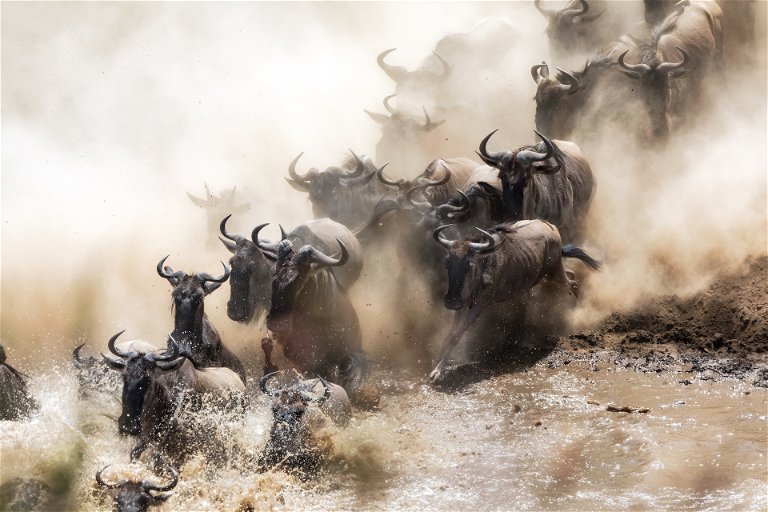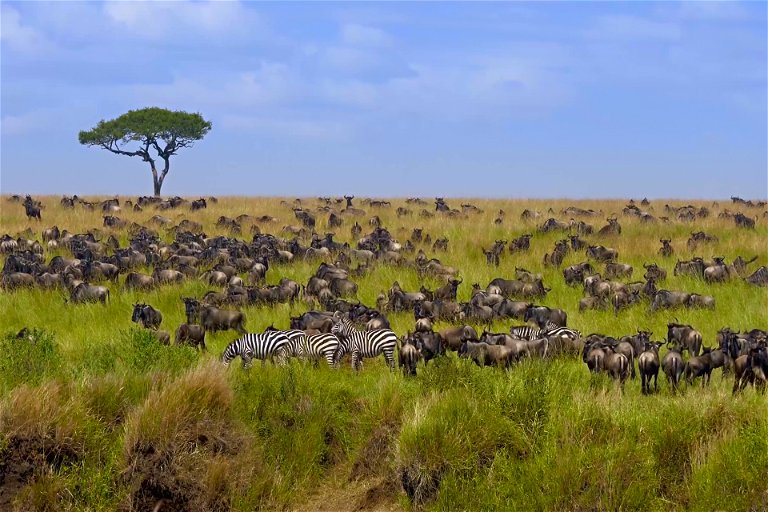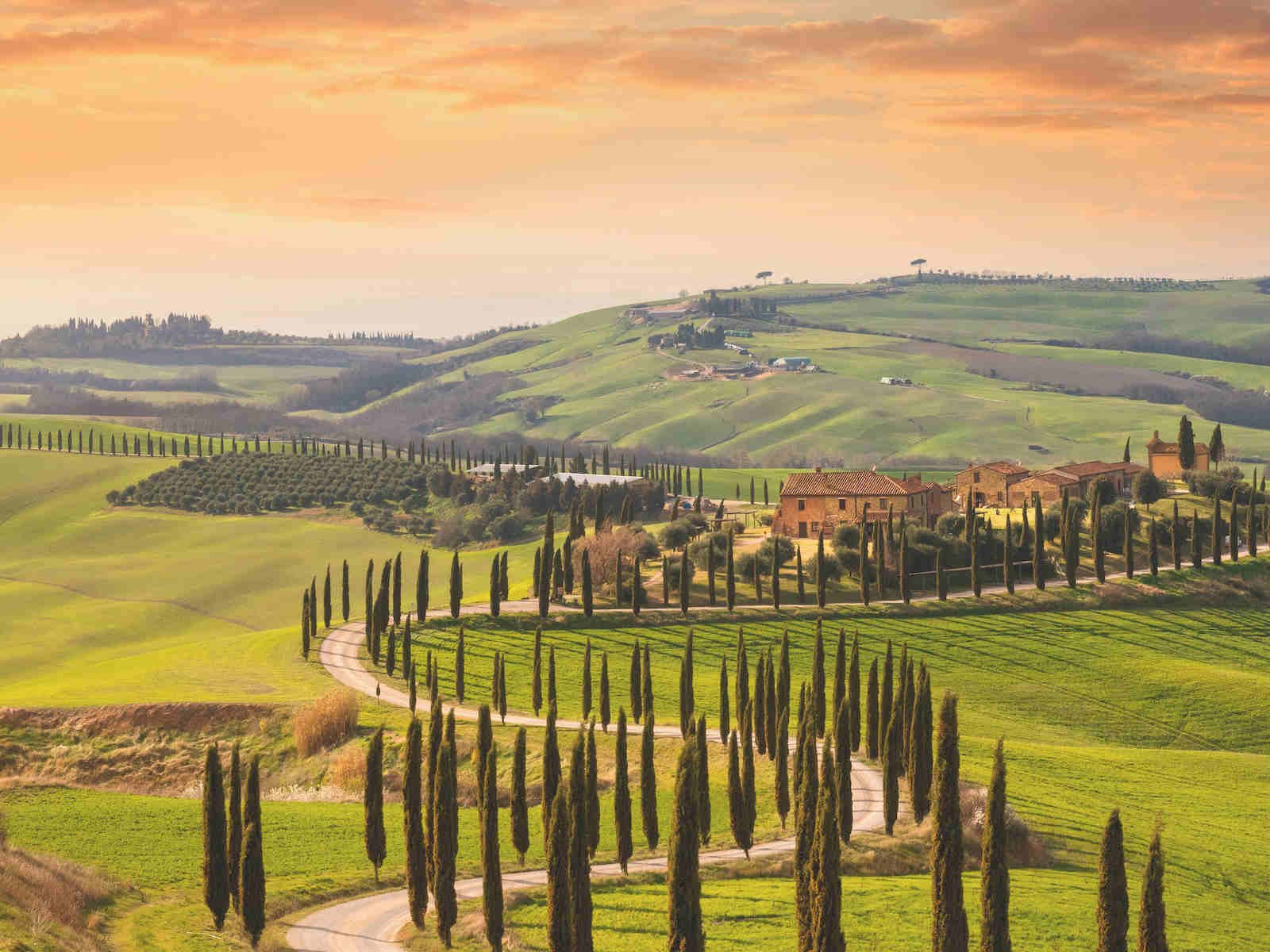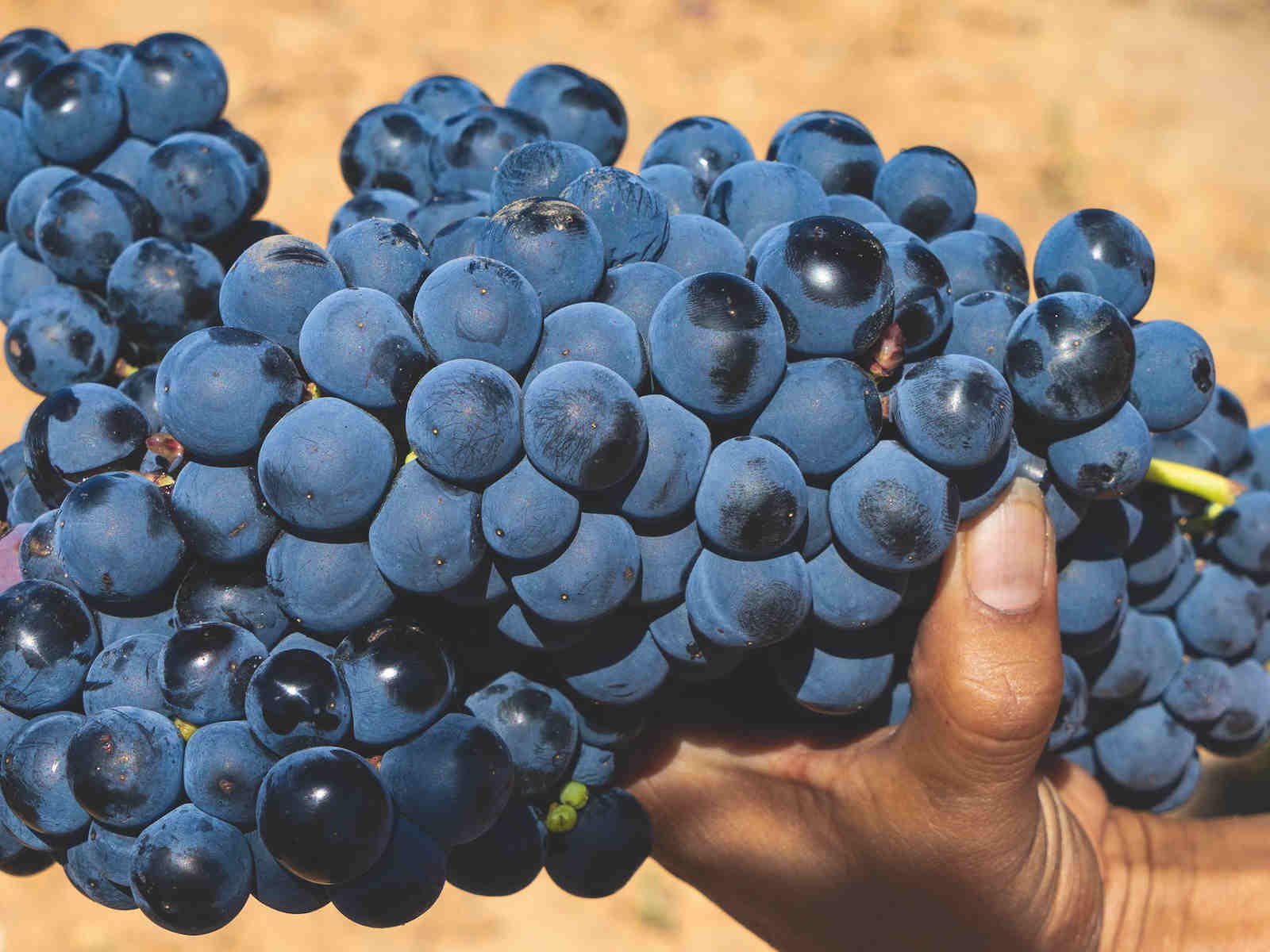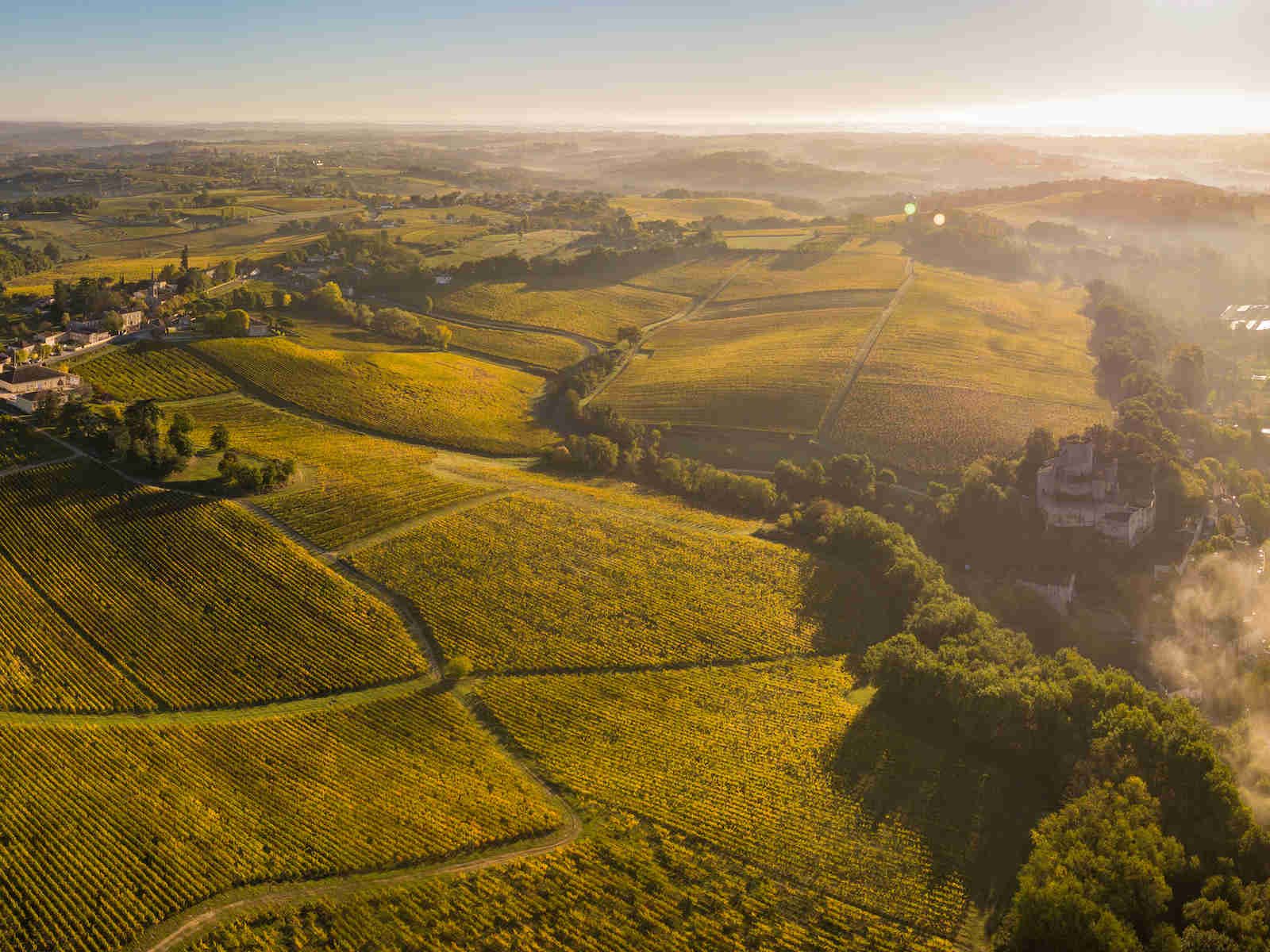Africa: The Great Migration
Every July and August thousands of animals migrate from Tanzania’s Serengeti to Kenya’s Masai Mara in search of fresh pastures. It is one of the last great mammal migrations of the world and a once-in-a-lifetime experience for visitors.
The thunder of several thousand hooves ripped along the riverbank, disappearing into plumes of amber dust. Gathering like dark clouds on the steep, dusty slopes of the Mara River, swelling herds of wildebeest had grazed and grunted for several hours before galvanising themselves into action. Eventually their slow-brewing storm erupted with a force so energetic and earthy, it sent shockwaves to the planet’s very core.
Witnessing a wildebeest river crossing is undoubtedly one of nature’s greatest spectacles. Every year, an estimated 1.2 million animals make a daredevil dash across crocodile-infested waters to reach Kenya’s Masai Mara, returning several months later to continue their never-ending circuit of Tanzania’s Serengeti.
Driven by rain and a promise of fresh pastures, these four-legged nomads travel en masse to form one of the world’s last true mammal migrations – but it is the river crossings that showcase life and death dramas in the wild.
Like anywhere in nature, there is no strict schedule. In recent years, movements have been confused by the maelstrom of climate change. But there is a general pattern for travellers to follow: led by a pioneering dazzle of zebras, the first arrivals usually reach the Mara in July, heading back around October.
Eager to catch the first wave of visitors, I based myself at the Bateleur Camp in the Mara Triangle, a quieter corner of the Masai Mara National Reserve within close range of the northern section of the Mara River – the stretch wildebeest cross first.
Buried into the base of the Oloololo Escarpment, forming part of Africa’s Great Rift Valley, the 18-tent camp fans into two separate areas within a private concession. A soaring rock face sweeping into big skies and endless plains, it is a setting so dramatic, it famously provided the backdrop for the final scenes of the movie classic Out of Africa.
Inside, illustrated maps, metal-clasped voyager trunks and Art Deco mini bars nostalgically evoke an era of exploration, while a game-viewing infinity pool and fine-dining bush menu bring the property up to date.
Patience rewarded
Days earlier, there had been reports of restless antelopes gathering on the horizon, so we set off at dawn to scope out one of their favourite crossing points. We arrived to find a rigid line of animals trooping obediently towards the water. Joining herds teetering along the edge of crumbling cliffs, their shiny pelts coruscated in the early morning sun.
Waiting for wildebeest, I soon discovered, requires patience. For hours, we watched the indecisive animals charge back and forth, grunting and honking in a rhythmic see-saw fashion which became strangely meditative after some time. Limbering up like athletes before a race, they would start to maniacally sprint in circles. This circling, we were optimistically informed by our guide, was an indication something might happen soon.
No one knows for certain why the wildebeest choose a certain place to cross. In an area booby-trapped by enormous crocodiles and lions lurking in the thick of riverine bushes, no safe passage is ever guaranteed.
The dramatic crossing
Most people deride the ‘gormless gnus’ for being stupid. But I would argue the opposite true. Some scientists suggest the animals have a sweat gland in their hooves, leaving a trail for others to follow. But, ultimately, everything hinges on one courageous individual daring to make a move.
There are no leaders or alphas in this animal democracy; instead, herds obediently follow whoever takes charge at that point. In a split second, without hesitation, they are united in one common purpose: to reach the other side.
Even though we had had plenty of time to prepare, the main event still took us by surprise. Splashing through water, their cavalcade flowed more furiously than any cataract, powering forward in an unstoppable flow. Horns and hooves crashed against rocks, leaving some poor souls floundering with broken limbs. Others fell victim to the jaws of hungry predators. But there was no turning back; only the fittest and strongest had a chance to survive.
Both powerful and perturbing, the experience left us silent and lost in thought for the drive back to camp, requiring a glass of Constantia Glen THREE to finally settle our mood. A Bordeaux-style blend, it burst with flavours of tobacco and deep, dark fruits, perfectly reflecting our surroundings with its old-world profile. While the safari staple has always been a gin and tonic, many camps now have extensive wine lists.
Sala’s Camp, set on the other side of the Mara along the banks of the Sand River, where wildebeest later cross, has a small but refined choice of bottles from South Africa to match what is arguably the finest dining in the bush. During my stay in the glass-fronted, semi-tented suites, a memorable dish of lemon-marinated lamb cutlets served with olive ugali pyramids could easily have been served by a Michelin-starred kitchen in a European capital. But it was the wildlife sightings that really stole the show. Attracted by the abundance of prey, predators swarmed around the area, enjoying their own delectable buffet.
Also benefitting from a front row riverside spot, Asilia’s Rekero Camp has equally commendable culinary offerings. Peeping discreetly from a woodland area, the rustic nine-tent camp is in the Hemingways in Nairobi is a luxurious pitstop between arrival and onward travel to the bush camps.
